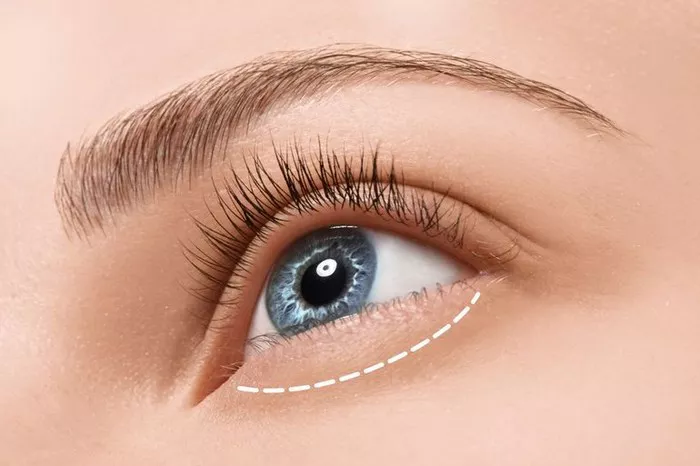Ublepharoplasty, often referred to as eyelid surgery, is a cosmetic procedure that aims to enhance the appearance of the upper eyelids by removing excess skin, fat, and muscle. While the desire for youthful, rejuvenated eyes is widespread, many individuals considering this procedure have concerns about its safety. In this comprehensive guide, we will delve into the world of upper blepharoplasty to provide a balanced view of its safety profile.
Understanding Upper Blepharoplasty
Upper blepharoplasty is a surgical procedure designed to address various concerns related to the upper eyelids. Some common reasons people opt for this surgery include:
Excess Skin: Aging can lead to sagging or drooping skin on the upper eyelids, which can impair vision and create a tired appearance.
Puffy Eyelids: The accumulation of fat deposits in the upper eyelids can result in a swollen or puffy look.
Hooded Eyelids: Excess skin on the upper eyelids can hang over the eyelashes, making it difficult to apply makeup and giving the eyes a hooded appearance.
Fatigue: Patients may undergo upper blepharoplasty to achieve a more alert and refreshed appearance.
Is Upper Blepharoplasty Safe?
The safety of any surgical procedure is a critical consideration. Here, we’ll discuss the safety aspects of upper blepharoplasty, including potential risks, precautions, and factors that contribute to a successful outcome.
Choosing a Qualified Surgeon
One of the most important factors in ensuring the safety of upper blepharoplasty is selecting a board-certified plastic surgeon or oculoplastic surgeon with expertise in eyelid surgery. These professionals have the necessary training and experience to perform the procedure safely and effectively. Always verify the credentials of your surgeon and ask for before-and-after photos of their previous work.
Preoperative Assessment
to the surgery, a thorough preoperative assessment is crucial. Your surgeon will evaluate your medical history, assess your current eye health, and discuss your expectations and concerns. This assessment helps identify any underlying medical conditions that may affect the surgery’s safety.
Anesthesia
Upper blepharoplasty is typically performed under local anesthesia with sedation or general anesthesia, depending on the surgeon’s recommendation and patient preferences. Anesthesia is administered by trained professionals to ensure your comfort and safety during the procedure.
Surgical Technique
The surgical technique used in upper blepharoplasty plays a significant role in its safety and effectiveness. Surgeons make incisions along the natural creases of the upper eyelids to minimize visible scarring. They then remove excess skin, fat, and muscle as needed. The choice of technique should be tailored to the individual patient’s needs.
Potential Risks
Like all surgical procedures, upper blepharoplasty carries some inherent risks, including:
Infection: Although rare, infection can occur following surgery.
Bleeding: Some postoperative bleeding is normal, but excessive bleeding is a potential complication.
Scarring: While efforts are made to minimize scarring, some scarring may be visible.
Dry Eyes: Temporary dryness or irritation of the eyes can occur but is usually temporary.
Changes in Eyelid Position: In rare cases, the position of the eyelids may change, leading to functional issues.
It’s essential to discuss these potential risks with your surgeon during your consultation and weigh them against the benefits of the procedure.
Recovery and Aftercare
Following upper blepharoplasty, proper aftercare is vital for a safe and successful recovery. Your surgeon will provide specific postoperative instructions, including the use of cold compresses, eye drops, and avoiding strenuous activities. Attend all scheduled follow-up appointments to monitor your progress and address any concerns promptly.
Long-term Results
The safety of upper blepharoplasty also extends to the long-term outcome. Most patients enjoy the benefits of the procedure for many years. However, it’s essential to maintain a healthy lifestyle, protect your eyes from excessive sun exposure, and follow your surgeon’s recommendations for continued eye health.
Conclusion
Upper blepharoplasty is generally considered safe when performed by a qualified, experienced surgeon and when patients follow preoperative and postoperative instructions diligently. Like any surgical procedure, it carries some inherent risks, but these are typically minimal and manageable.
If you are considering upper blepharoplasty, it’s crucial to consult with a board-certified plastic surgeon or oculoplastic surgeon who can assess your individual needs and provide guidance on whether the procedure is appropriate for you. Your safety and satisfaction should be the top priorities throughout the process, ensuring that you achieve the desired rejuvenation of your upper eyelids with minimal risks.


